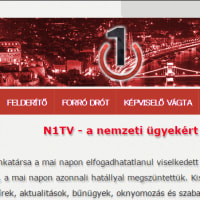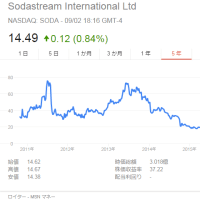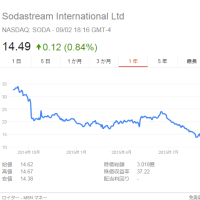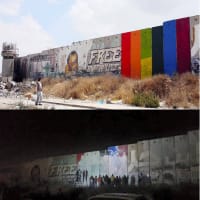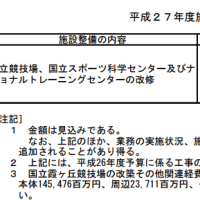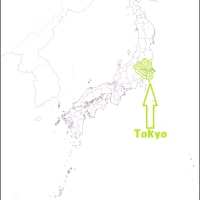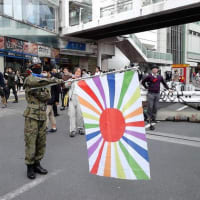3年前のことになるが、Invisible Childrenという団体が『KONY 2012』という動画を公開した。
動画の目的は、ウガンダで活動しているゲリラ組織「Lord’s Resistance Army(LRA)」の指導者ことジョセフ・コニー(Joseph Kony)の逮捕とLRAの壊滅を世界各国に訴えるというもの。
この動画は良くも悪くも議論のネタとなり、Invisible Childrenの名を上げることになった。
だが、この団体は去年あたりから活動規模を縮小し活動終了に向かってる模様・・・。
・Invisible Children, The Group Behind Kony 2012, Is Shutting Down(2014年12月14日 fastcoexist.com)
2012年の段階で俺は全くこの話を知らなかったが、Invisible~の行動は色々な教訓を残した模様。
とりあえず、2014年12月14日分 fastcoexist.com『Invisible Children~』から序盤部分を(略)
---- 以下引用 ----
Invisible Children, the nonprofit behind the Kony 2012 film―often called the most viral video of all time―is slowly shutting down its operations. First, the U.S. office will close, leaving just a handful of remote workers behind to work on advocacy. Then, within 12 to 18 months, Invisible Children will hand off its work on the ground in East Africa to partner organizations.
The shutdown isn't just about cofounder Jason Russell's much publicized 2012 naked meltdown in the wake of the film's viral success, though that certainly didn't help the nonprofit's fundraising after the huge infusion of money that followed the video.
Invisible Children―which was founded to end the Lord's Resistance Army (LRA), an armed group of child soldiers in Uganda led by a mysterious, brutal leader, Joseph Kony―has spent most of the money it raised and is finding it hard to raise more, but that may not be the worst thing: The issue might be close enough to being resolved that the organization just isn't needed anymore.
In a world where the next ice bucket challenge is a tweet away, how the organization handled the rush of cash, rode a wave of criticism, and dealt with the subsequent attention vacuum can be a lesson to every organization hoping for its own viral hit.
(以下略)
---- 引用以上 ----
そもそも、Invisible~と『KONY 2012』に関しては、ウガンダの現状を正しく伝えてないという批判があったんだよな。
・
世界を席巻するキャンペーン動画「KONY 2012」に異議アリ!?(2012年3月15日 wired.jp)
上の記事では、Invisible~と『KONY 2012』に対するメディアからの批判を紹介した上で、ActionAid Uganda支部の責任者ことアーサ・ラロック(Arthur Larok)氏のコメントを掲載していた。
以下、2012年3月15日分 wired.jp『世界を席巻する~』から中盤部分を(略)
---- 以下引用 ----
(中略)
ウガンダのジャーナリストやその他の支援団体などからも批判が相次いでいる。
その内容は、この動画がウガンダの現状を伝えておらず、ウガンダの政治状況に関する背景を単純化した寄付金集めのキャンペーンに過ぎないというものだ。
Guardianは3月8日の別の記事で、ウガンダの作家Angelo Opi-Aiya Izamaのブログからコメントを引いて、コニーのゲリラ部隊が北部ウガンダを恐怖に陥れていたのは過去の話で、現在、同地における問題は、むしろ児童売春であり、HIVであり、謎の奇病「頷き病」なのだと語る。
また、コニー逮捕のために米軍が支援するウガンダ政府自体が腐敗しており、ゲイを殺害すべきだと過去に表明したこともあるなど、人道上問題の多い政府であることも指摘されている。
ジョセフ・コニーのような人物をこれ以上のさばらせておくことはできない。
Invisible Childrenと今回の動画に批判的な人も、すべてこの点では同意している。
ただ、そのやり方や目的についてはさまざまな観点から議論がある。
そもそも、コニーを逮捕したからといって、アフリカの窮状がドラスティックに改善するわけではないことは多くの人が指摘する通りなのだろう。
ウガンダをはじめ、隣接するコンゴ民主共和国や中央アフリカの政治状況が混迷を極め、その経緯が複雑を極めることは知られている。
また、世界の多くの人がジョセフ・コニーの名前をこの動画で初めて知ったにせよ、コニーが残虐行為を続けてきたこの間、国際的な人権団体やさまざまなNGO、NPOが状況の改善を目指して地道に活動を続けてきたことも見過ごされてはならないだろう。
Uganda National NGO Forumの前ディレクターで現在はAction Aidsのディレクターを務めるArthur Larokは語る。
「6~10年前でしたら、国際社会の喚起を促すキャンペーンは有効だったでしょう。けれども、コニーがすでに北ウガンダを離れてしまった以上、効果のほどはさだかではありません。状況はすでに変わっているのです。現在、この地におけるプライオリティは、教育や衛生、健康や生計をどうやって確保し保全するかに移っています」「こうしたキャンペーンはアメリカでは効果があるんでしょうけれど、これがウガンダの現状を正確に伝えているとは言えません。現在のウガンダにドラマチックな要素はありません。ウガンダが直面している政治的、社会的、経済的な困難は複雑なものなのです」「メディアに望むとするなら、状況を正確に伝えてくれることです。それが状況の改善につながるのです」
(以下略)
---- 引用以上 ----
実際、『KONY 2012』は、Invisible~の資金集めに相当影響を与えた。
fastcoexist.comの記事によると、2012年に集めた資金は2800万ドル(2008年~2011年は800万~1300万ドルの間)に達したという。
だが、翌年には550万ドルに急落し、Invisible~の運営は一気に苦しくなった。
この資金繰りの状況に関して、Invisible~の最高責任者ことベン・キージー(Ben Keesey)氏はNGOの活動資金のやりくりに絡め意味深なコメントをしていた。
以下、2014年12月14日分 fastcoexist.com『Invisible Children~』からその部分を(略)
---- 以下引用 ----
(中略)
"It’s a story of major progress, but recently it’s been unsustainable for us to finance the organization in the same way," says Keesey.
"One of the things we’ve learned is that when you are a single-issue human rights organization like we are, trying to reduce the violence of the LRA and supporting communities, it’s hard to reinvent your story. Every year we had to find a new way to reengage citizens and policymakers."
He points out that critics of the Kony 2012 campaign, who damned it for being focused on social media instead of solutions, failed to realize that Obama has to decide whether to reauthorize his LRA deployments every six months, forcing Invisible Children's to constantly rally for political support.
In other words, the Kony 2012 campaign may have been just as important for the widespread awareness it raised (and ostensibly the political pressure it created) than for any part of its role in bringing down Kony.
"Some of it is also the nature of when one specific cause has such a moment in the spotlight, it's hard for the cause to sustain itself going forward. It's fair to assume that the ALS ice bucket challenge won't get $100 million next summer," says Keesey.
This is a relatively new predicament for nonprofits: what to do after a viral hit offers an unprecedented moment in the sun, accompanied by more cash than they know what to do with.
It's a fair assumption that the money coming from a viral video or campaign is a one-time thing, and viral hits are too rare to bet on having a second one.
The Invisible Children option―spending all the cash in one go―is an especially risky decision for organizations that have small budgets.
But for an organization that doesn't mind putting itself out of business in the name of a cause, it makes sense.
The campaign to capture Kony and shut down the LRA is, in the near-term, more achievable than curing ALS.
On the other hand, there is something to be said for holding onto money and saving it up for future campaigns, as the ALS Foundation is doing (specifically directing a portion of money towards research over the next few years and deliberating on what to do with the rest).
For nonprofits working on issues that will be around for the foreseeable future, this is probably the best option.
(以下略)
---- 引用以上 ----
集めた資金を団体の「その後」のために使うってのは、意外と難しいのかもしれん。
とりわけ、Invisible~の場合、活動目的が限定されてるため、資金を他の活動のために使いづらかったってのも影響してたんだろうな。
無論、Invisible~の創設者の人達がそこまで考えてたかどうか知らんが。
いずれにしろ、Invisible~の顛末は、人道支援団体みたいなNGOにとって避けることのできない課題を突きつけた格好っぺぇ。
・The invisible lesson of Invisible Children(2015年2月3日 irinnews.org)
以下、2015年2月3日分 irinnews.org『The invisible lesson~』から終盤部分を(略)
---- 以下引用 ----
(中略)
The subtext of Invisible Children's narrative was simple: give us your support, and most importantly your money, and we'll take care of this.
If that tactic sounds familiar, it's because it's the subtext of every single humanitarian fundraising appeal ever. Humanitarian organisations don't connect those affected by disasters with those who can help.
They mediate between the two groups, and so contribute to keeping them separate.
The power structures that prevent vulnerable people from having access to resources are the same structures that prevent them from having access to communications – which has long been recognised as a vital resource itself.
Humanitarian organisations need to ask themselves whether trying to hold on to their mediating role – the role that brings in the cash – fits with their wider ethic of social and economic justice.
Invisible Children held a mirror up to the aid industry, and we didn't like what we saw.
That mirror's gone now, but that doesn't mean that we look any better.
---- 引用以上 ----
資金を集めるのも活動の一環とはいうが・・・。
動画の目的は、ウガンダで活動しているゲリラ組織「Lord’s Resistance Army(LRA)」の指導者ことジョセフ・コニー(Joseph Kony)の逮捕とLRAの壊滅を世界各国に訴えるというもの。
この動画は良くも悪くも議論のネタとなり、Invisible Childrenの名を上げることになった。
だが、この団体は去年あたりから活動規模を縮小し活動終了に向かってる模様・・・。
・Invisible Children, The Group Behind Kony 2012, Is Shutting Down(2014年12月14日 fastcoexist.com)
2012年の段階で俺は全くこの話を知らなかったが、Invisible~の行動は色々な教訓を残した模様。
とりあえず、2014年12月14日分 fastcoexist.com『Invisible Children~』から序盤部分を(略)
---- 以下引用 ----
Invisible Children, the nonprofit behind the Kony 2012 film―often called the most viral video of all time―is slowly shutting down its operations. First, the U.S. office will close, leaving just a handful of remote workers behind to work on advocacy. Then, within 12 to 18 months, Invisible Children will hand off its work on the ground in East Africa to partner organizations.
The shutdown isn't just about cofounder Jason Russell's much publicized 2012 naked meltdown in the wake of the film's viral success, though that certainly didn't help the nonprofit's fundraising after the huge infusion of money that followed the video.
Invisible Children―which was founded to end the Lord's Resistance Army (LRA), an armed group of child soldiers in Uganda led by a mysterious, brutal leader, Joseph Kony―has spent most of the money it raised and is finding it hard to raise more, but that may not be the worst thing: The issue might be close enough to being resolved that the organization just isn't needed anymore.
In a world where the next ice bucket challenge is a tweet away, how the organization handled the rush of cash, rode a wave of criticism, and dealt with the subsequent attention vacuum can be a lesson to every organization hoping for its own viral hit.
(以下略)
---- 引用以上 ----
そもそも、Invisible~と『KONY 2012』に関しては、ウガンダの現状を正しく伝えてないという批判があったんだよな。
・
世界を席巻するキャンペーン動画「KONY 2012」に異議アリ!?(2012年3月15日 wired.jp)
上の記事では、Invisible~と『KONY 2012』に対するメディアからの批判を紹介した上で、ActionAid Uganda支部の責任者ことアーサ・ラロック(Arthur Larok)氏のコメントを掲載していた。
以下、2012年3月15日分 wired.jp『世界を席巻する~』から中盤部分を(略)
---- 以下引用 ----
(中略)
ウガンダのジャーナリストやその他の支援団体などからも批判が相次いでいる。
その内容は、この動画がウガンダの現状を伝えておらず、ウガンダの政治状況に関する背景を単純化した寄付金集めのキャンペーンに過ぎないというものだ。
Guardianは3月8日の別の記事で、ウガンダの作家Angelo Opi-Aiya Izamaのブログからコメントを引いて、コニーのゲリラ部隊が北部ウガンダを恐怖に陥れていたのは過去の話で、現在、同地における問題は、むしろ児童売春であり、HIVであり、謎の奇病「頷き病」なのだと語る。
また、コニー逮捕のために米軍が支援するウガンダ政府自体が腐敗しており、ゲイを殺害すべきだと過去に表明したこともあるなど、人道上問題の多い政府であることも指摘されている。
ジョセフ・コニーのような人物をこれ以上のさばらせておくことはできない。
Invisible Childrenと今回の動画に批判的な人も、すべてこの点では同意している。
ただ、そのやり方や目的についてはさまざまな観点から議論がある。
そもそも、コニーを逮捕したからといって、アフリカの窮状がドラスティックに改善するわけではないことは多くの人が指摘する通りなのだろう。
ウガンダをはじめ、隣接するコンゴ民主共和国や中央アフリカの政治状況が混迷を極め、その経緯が複雑を極めることは知られている。
また、世界の多くの人がジョセフ・コニーの名前をこの動画で初めて知ったにせよ、コニーが残虐行為を続けてきたこの間、国際的な人権団体やさまざまなNGO、NPOが状況の改善を目指して地道に活動を続けてきたことも見過ごされてはならないだろう。
Uganda National NGO Forumの前ディレクターで現在はAction Aidsのディレクターを務めるArthur Larokは語る。
「6~10年前でしたら、国際社会の喚起を促すキャンペーンは有効だったでしょう。けれども、コニーがすでに北ウガンダを離れてしまった以上、効果のほどはさだかではありません。状況はすでに変わっているのです。現在、この地におけるプライオリティは、教育や衛生、健康や生計をどうやって確保し保全するかに移っています」「こうしたキャンペーンはアメリカでは効果があるんでしょうけれど、これがウガンダの現状を正確に伝えているとは言えません。現在のウガンダにドラマチックな要素はありません。ウガンダが直面している政治的、社会的、経済的な困難は複雑なものなのです」「メディアに望むとするなら、状況を正確に伝えてくれることです。それが状況の改善につながるのです」
(以下略)
---- 引用以上 ----
実際、『KONY 2012』は、Invisible~の資金集めに相当影響を与えた。
fastcoexist.comの記事によると、2012年に集めた資金は2800万ドル(2008年~2011年は800万~1300万ドルの間)に達したという。
だが、翌年には550万ドルに急落し、Invisible~の運営は一気に苦しくなった。
この資金繰りの状況に関して、Invisible~の最高責任者ことベン・キージー(Ben Keesey)氏はNGOの活動資金のやりくりに絡め意味深なコメントをしていた。
以下、2014年12月14日分 fastcoexist.com『Invisible Children~』からその部分を(略)
---- 以下引用 ----
(中略)
"It’s a story of major progress, but recently it’s been unsustainable for us to finance the organization in the same way," says Keesey.
"One of the things we’ve learned is that when you are a single-issue human rights organization like we are, trying to reduce the violence of the LRA and supporting communities, it’s hard to reinvent your story. Every year we had to find a new way to reengage citizens and policymakers."
He points out that critics of the Kony 2012 campaign, who damned it for being focused on social media instead of solutions, failed to realize that Obama has to decide whether to reauthorize his LRA deployments every six months, forcing Invisible Children's to constantly rally for political support.
In other words, the Kony 2012 campaign may have been just as important for the widespread awareness it raised (and ostensibly the political pressure it created) than for any part of its role in bringing down Kony.
"Some of it is also the nature of when one specific cause has such a moment in the spotlight, it's hard for the cause to sustain itself going forward. It's fair to assume that the ALS ice bucket challenge won't get $100 million next summer," says Keesey.
This is a relatively new predicament for nonprofits: what to do after a viral hit offers an unprecedented moment in the sun, accompanied by more cash than they know what to do with.
It's a fair assumption that the money coming from a viral video or campaign is a one-time thing, and viral hits are too rare to bet on having a second one.
The Invisible Children option―spending all the cash in one go―is an especially risky decision for organizations that have small budgets.
But for an organization that doesn't mind putting itself out of business in the name of a cause, it makes sense.
The campaign to capture Kony and shut down the LRA is, in the near-term, more achievable than curing ALS.
On the other hand, there is something to be said for holding onto money and saving it up for future campaigns, as the ALS Foundation is doing (specifically directing a portion of money towards research over the next few years and deliberating on what to do with the rest).
For nonprofits working on issues that will be around for the foreseeable future, this is probably the best option.
(以下略)
---- 引用以上 ----
集めた資金を団体の「その後」のために使うってのは、意外と難しいのかもしれん。
とりわけ、Invisible~の場合、活動目的が限定されてるため、資金を他の活動のために使いづらかったってのも影響してたんだろうな。
無論、Invisible~の創設者の人達がそこまで考えてたかどうか知らんが。
いずれにしろ、Invisible~の顛末は、人道支援団体みたいなNGOにとって避けることのできない課題を突きつけた格好っぺぇ。
・The invisible lesson of Invisible Children(2015年2月3日 irinnews.org)
以下、2015年2月3日分 irinnews.org『The invisible lesson~』から終盤部分を(略)
---- 以下引用 ----
(中略)
The subtext of Invisible Children's narrative was simple: give us your support, and most importantly your money, and we'll take care of this.
If that tactic sounds familiar, it's because it's the subtext of every single humanitarian fundraising appeal ever. Humanitarian organisations don't connect those affected by disasters with those who can help.
They mediate between the two groups, and so contribute to keeping them separate.
The power structures that prevent vulnerable people from having access to resources are the same structures that prevent them from having access to communications – which has long been recognised as a vital resource itself.
Humanitarian organisations need to ask themselves whether trying to hold on to their mediating role – the role that brings in the cash – fits with their wider ethic of social and economic justice.
Invisible Children held a mirror up to the aid industry, and we didn't like what we saw.
That mirror's gone now, but that doesn't mean that we look any better.
---- 引用以上 ----
資金を集めるのも活動の一環とはいうが・・・。












